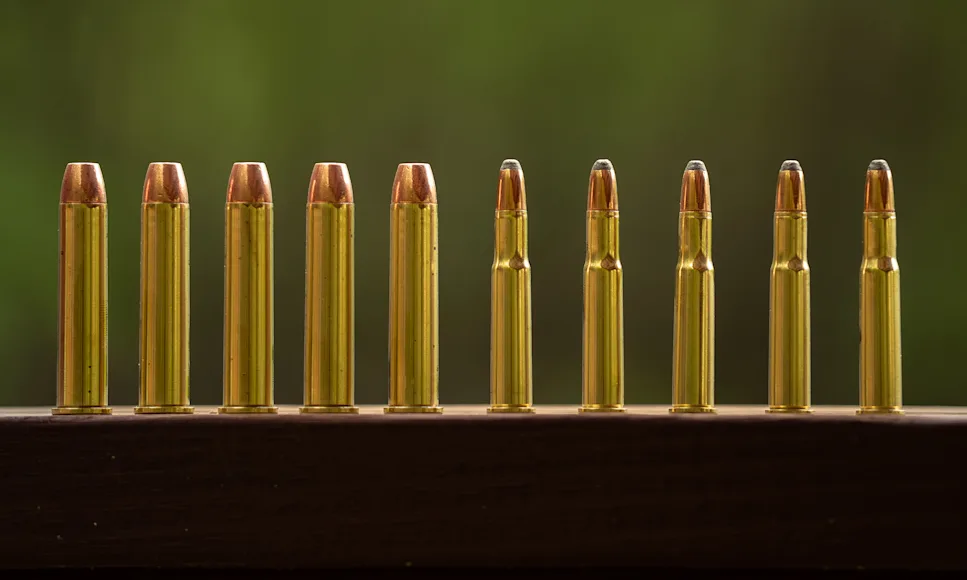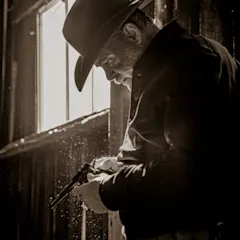We may earn revenue from the products available on this page and participate in affiliate programs. Learn more ›
Even though it seems like everyone is addicted to long-range shooting these days, traditional lever-action rifles remain popular. I think this is partly because as shooters become more familiar with different types of rifles, they begin to appreciate the fast-handling advantages that traditional lever-action rifles offer. I also think it is partly because everyone has a little cowboy in them. But deciding you want a lever gun is only the first step. Lever-action rifle calibers are primarily .30, .35, and .45, with the most popular and classic cartridges being the 30-30 Winchester and the 45-70 Government. Here’s how these two stack up.
45-70 vs. 30-30: Table of Contents
The 30-30 Winchester
The 45-70 Government
45-70 vs 30-30: Deer Hunting
45-70 vs .30-30: Bigger Critters
45-70 vs 30-30: Dangerous Game
45-70 vs 30-30: Best Loads
Which is Best?
The 30-30 Winchester
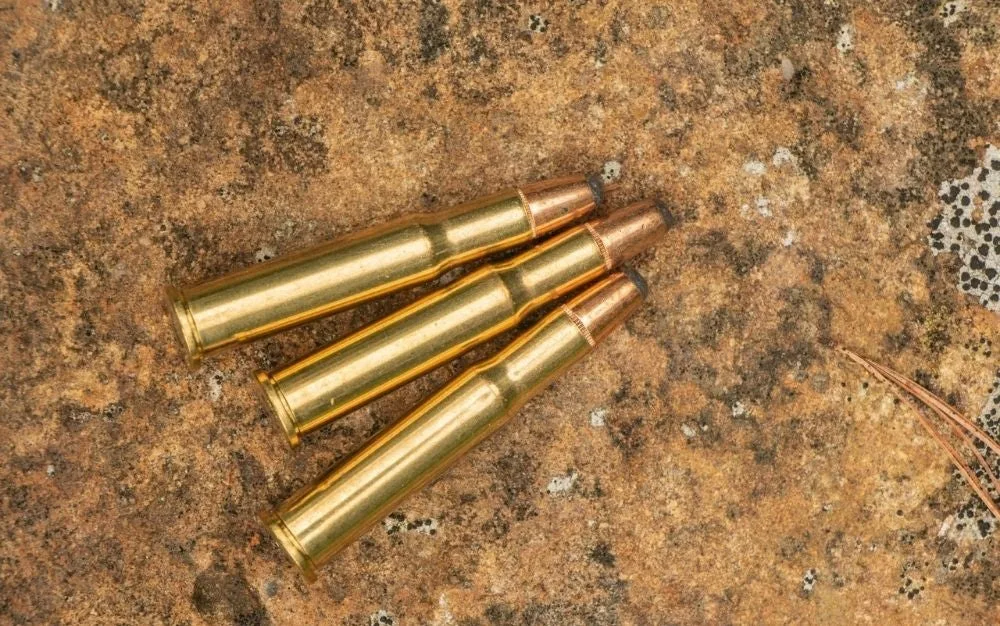
The 30-30 became available in 1895 in Winchester’s Model 1894 lever-action rifle. It was America’s first sporting cartridge to be loaded with smokeless powder, and it was originally loaded with a 160-grain bullet and 30 grains of powder. This produced a muzzle velocity of about 1950 fps. The cartridge got its name from its 0.30-caliber (0.308-inch) bullet, and the 30 grains of powder that fueled it. Since then, the cartridge has been chambered in a wide range of rifles, but the 30-30 gained its fame and popularity in the Winchester 94 and the Marlin 336 lever guns, and when it comes to modern 30-30 ballistics, things are a bit improved today.
The most common loading is a 150-grain bullet at an advertised 2390 fps. However, for common 20-inch barreled traditional lever guns, real muzzle velocities are closer to 2300 fps. This is a powerful combination and has been used effectively on everything from feral hogs all the way up to moose. You can also get 170-grain loads, but they don’t really offer any practical advantage over 150-grain loadings.
However, there is another option. Hornady offers 140- and 160-grain LEVERevolution loads. What sets these apart is that they have a spitzer instead of a round-nose bullet. Round nose bullets have always been required in tube-fed lever guns, but the soft rubber FlexTip used by Hornady makes these pointy bullets safe in the magazine tube. With the LEVERevolution ammunition, the 30-30 has a 13% flatter trajectory and retains about 6% more energy. Regardless the loading, a traditional 30-30 lever gun will recoil with between 10 and 13 foot-pounds of energy. Many hunters have an old 30-30 rifle. Maybe it was passed down from their grandfather, or maybe it was their first deer rifle. Although it may not be considered a high-powered rifle by modern standards, it is fully capable of taking deer-size—and larger—game out to around 200 yards.
Related: Why a 30-30 Is All a Good Hunter Needs
The 45-70 Government
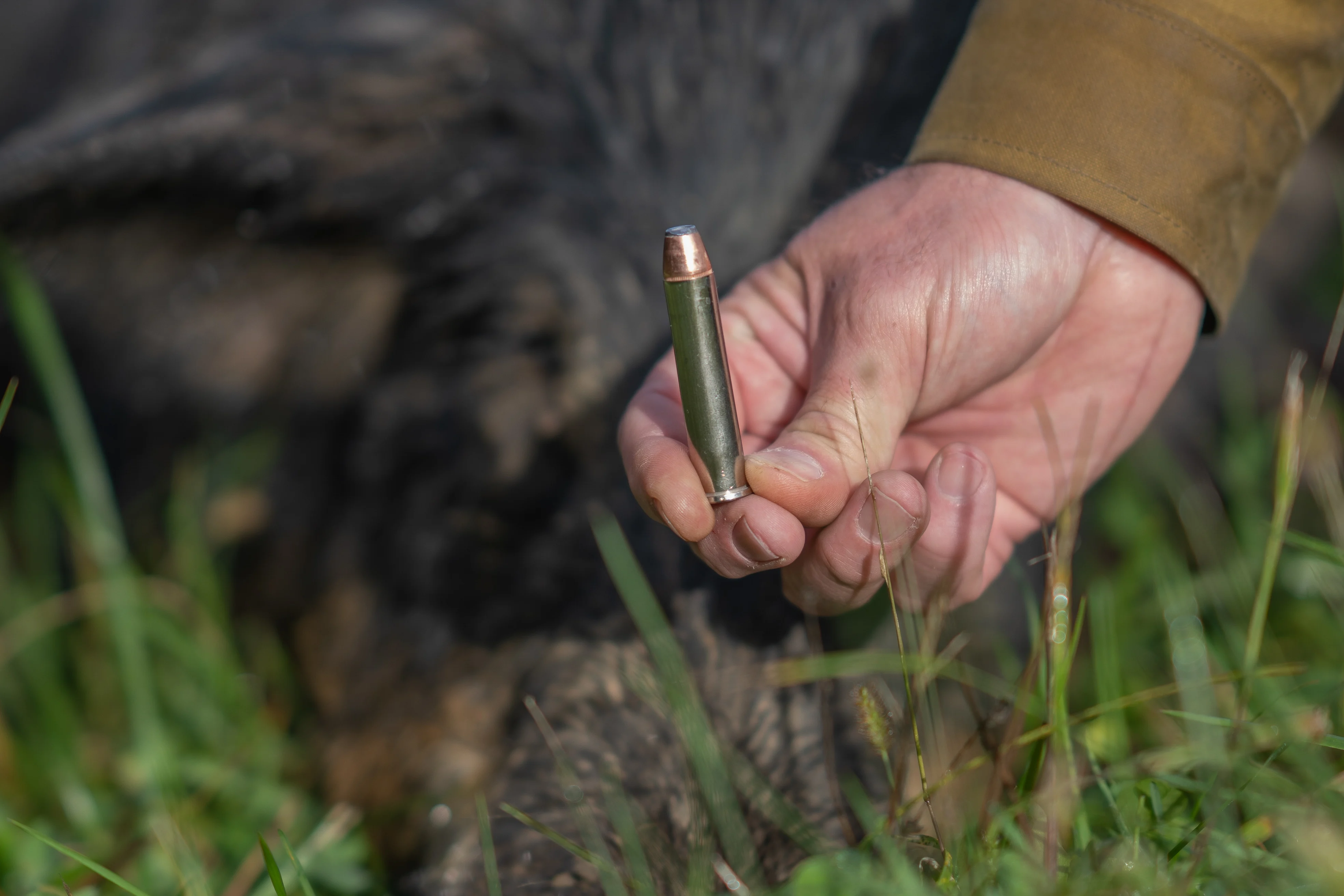
When most think of a 45-70, they think of a 45-70 lever-action rifle. However, the first 45-70 was not a lever gun. The cartridge was adopted by the U.S. military in 1873 in the single-shot Trapdoor Springfield rifle. The ballistics of original 45-70 ammo was nothing to crow about by today’s standards. It was originally loaded with a 405-grain 0.45-caliber bullet ahead of 70 grains of black powder, hence the 45-70 name. This load had a muzzle velocity of around 1300 fps and compared to modern 45-70 ballistics it was like throwing a rock. At 200 yards, the bullet would drop more than 2 feet.
With the arrival of the 30-30 Winchester and the 20th Century, interest in the 45-70 waned. It simply could not compete with the flatter-shooting 30-30 or the even more modern 30-06. However, in the early 70s Marlin reintroduced their 1895 lever-action rifle chambered for the 45-70. The new 1895 could handle ammunition loaded with much higher pressures and soon we began to see the second power level of 45-70 ammunition, which included 300-grain bullets being pushed to around 1800 fps. These carried more than 1000 foot-pounds of energy to 200 yards, with trajectories twice as flat as the original loading. But the advancement in 45-70 ammo did not stop there. Companies like Buffalo Bore began loading third power level “heavy” 45-70 ammunition. Recoil is brutal, however. Out of a Marlin 1895, these heavy loads generate nearly 50 foot-pounds of shoulder shoving punch.
45-70 vs 30-30 for Deer Hunting
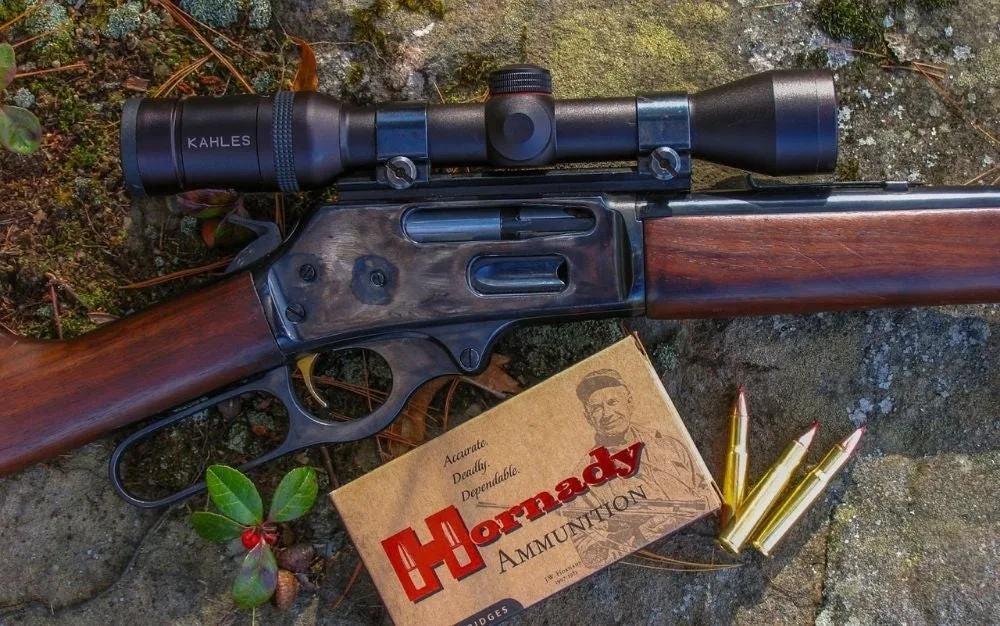
When it comes to the 30-30 vs 45-70 for hunting deer or similar size game, for most hunters the 30-30 Winchester is the best option. The various 150-grain loads have proven to be fantastic for deer hunting and recoil is negligible. Currently, Winchester, Marlin, and Henry offer traditionally styled lever guns, and you can find used Winchester 94s and Marlin 336s at about any gun shop. Also, the ammunition options for the 30-30 are plentiful. There are about 20 different 150-grain loads to choose from, as well as the previously mentioned LEVERevolution loads from Hornady.
The 45-70 is for sure deer capable with any load, and with second power level loads, it’s good to go out past 200 yards. However, even though it has the power for clean 200-yards kills, from a trajectory standpoint it’s inferior to the 30-30 Winchester and comes with added recoil. A 45-70 loaded with a 300-grain bullet at about 1800 fps will recoil almost three times as hard as a 30-30 Winchester. Surprisingly, when similar 30-30 and 45-70 loads are compared, the 150-grain 30-30 bullet will generally penetrate about 10% deeper.
But there is yet another consideration. In some states, where shotguns were previously all a hunter could use for deer, many are now allowing straight-wall centerfire rifle cartridges. If you’ll be deer hunting in one of those states, the 45-70 is a good straightwall option, whereas the 30-30 Winchester is not legal.
Read Next: The .308 vs .30-06
45-70 vs 30-30 for Bigger Game
The 45-70 really steps away from the 30-30 Winchester when it comes time for larger game like elk and moose. Though the 45-70 will not deliver any deeper penetration with second power level loads, it will make larger holes because the bullets deform with a wider frontal diameter. In some cases, a 300-grain 45-70 bullet will deform with a frontal diameter that’s 33% larger than most 150-grain 30-30 loads. This means there’s the potential for as much as 50% more tissue destruction. Elk and moose have big lungs and with low velocity cartridges like the 30-30 and 45-70, the larger the hole you make in them, the better.
45-70 vs 30-30 for Dangerous Game
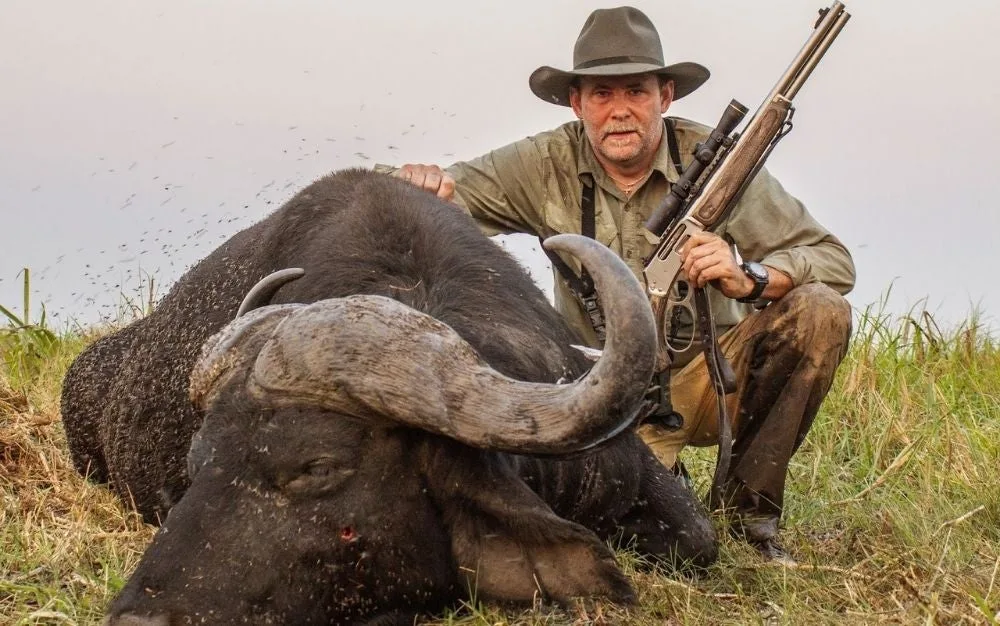
At the beginning of his African hunting career in the early 1900s, professional hunter Wally Johnson killed several lions with a 30-30 Winchester. There’s no question it can be done, but lions are more dangerous than they are big. When it comes to big and dangerous game, bullets that penetrate deeply and make a large-diameter hole are much preferred, and the 30-30 Winchester simply cannot deliver the bullets needed to make this happen. The 45-70 can get the job done, but you’ll need the third power level, magnum-like loads for the best results.
45-70 vs 30-30: Best Loads
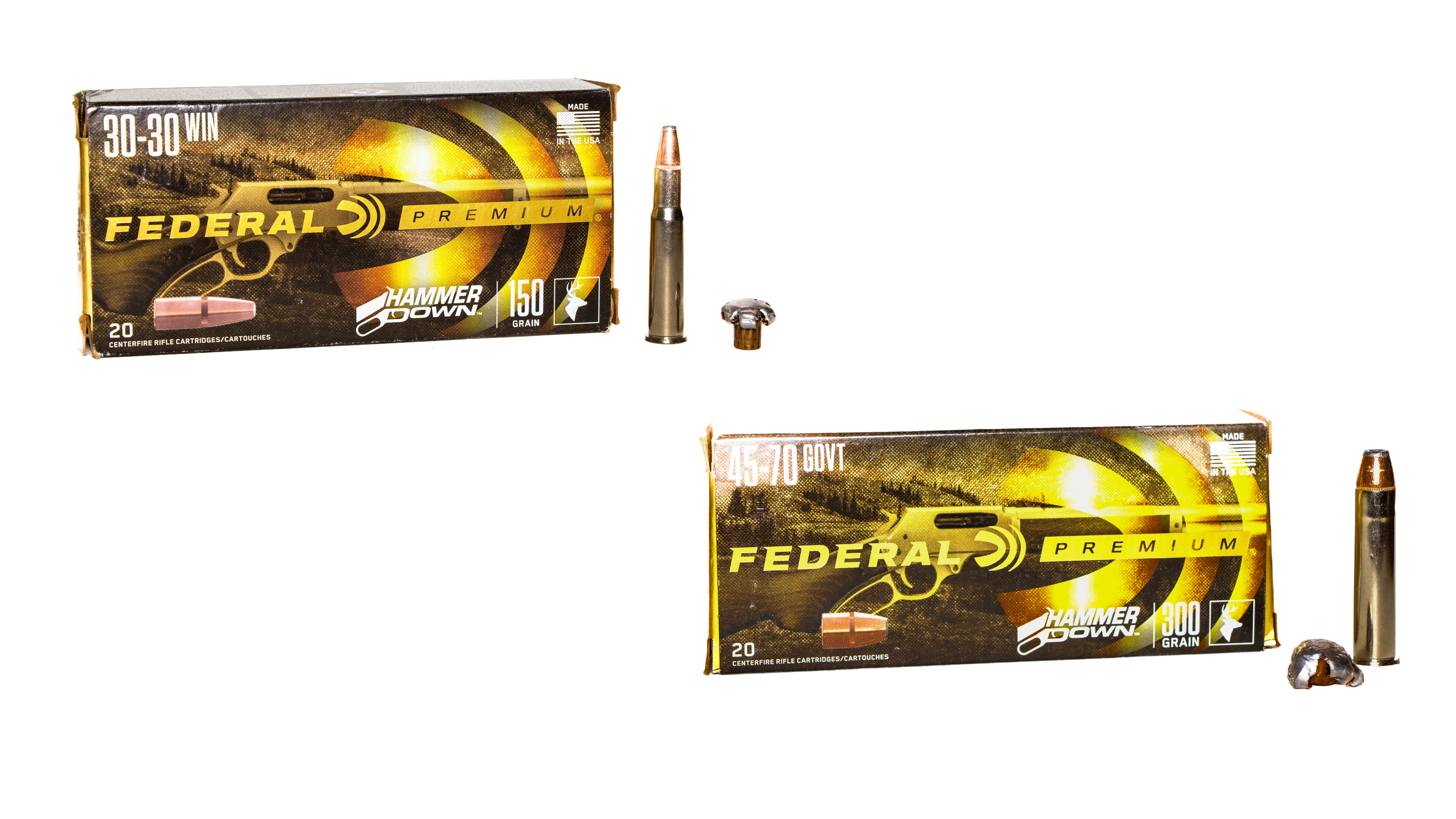
With more than 100 factory loads available for the 30-30 Winchester and 45-70 Government, you might think choosing a best or even just a good load would be difficult. It’s not. With the 30-30 Winchester, use the common 150-grain loads from most manufacturers, and with the 45-70, several companies load the Barnes 300-grain TSX bullet, which is a great option. However, based on my testing and hunting experience, the best non-dangerous big-game loads for both cartridges are the HammerDown loads from Federal. Both have molecularly bonded bullets that upset with a wide frontal diameter and will hold together to penetrate to around 2 feet in 10% ordnance gelatin. Additionally, HammerDown ammo is loaded in nickel-plated cases to resist corrosion, and that, combined with the slight chamfer on the forward edge of the case rim, make them ideal for loading in lever-action rifles.
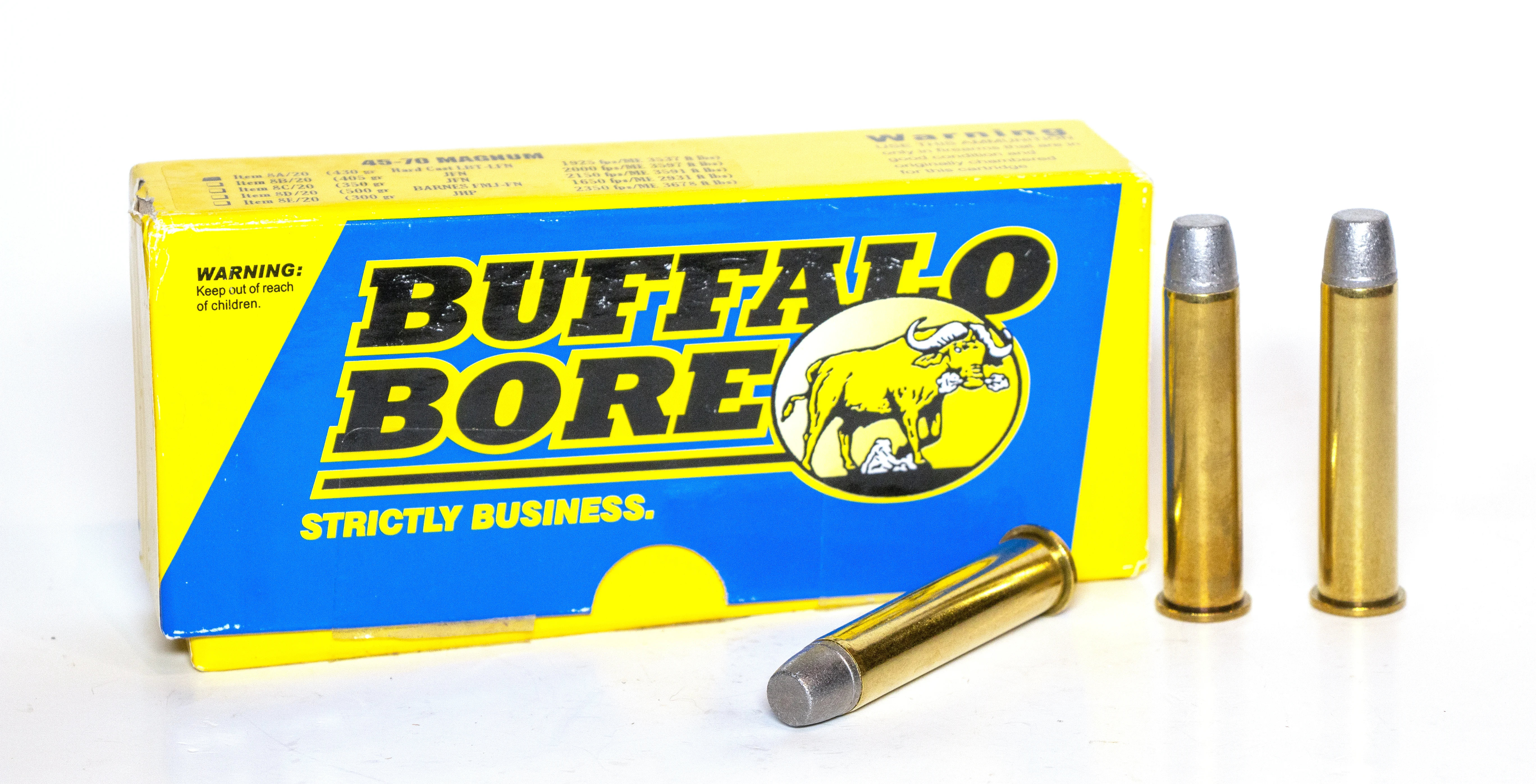
If you want to go after dangerous game with the 45-70, the 300-grain HammerDown load would work well for lion or leopard, and even for big bears. But if you are after buffalo or hippo, you are going to want more penetration. In fact, if you are after those big, mean and nasty bears, you might want more power and penetration as well. For that, turn to Buffalo Bore’s 430-grain hardcast load that leaves the muzzle at almost 2000 fps with more than 3500 foot-pounds of kinetic energy. I’ve seen this load work to perfection on numerous African buffalo.
Related: 6.5 Creedmoor vs 308 Winchester
Which is Best?
It is not a question of whether the 30-30 or 45-70 is the best cartridge for a traditional lever action rifle. The question that matters when it comes to the 45-70 vs 30-30 is, which cartridge is best for you? If you’re only going to hunt feral hogs, deer, or black bear, the 30-30 makes the most sense. It’s more than capable to handle these critters, shoots flatter and generates much less recoil than any 45-70 load. If you’re also going to hunt the occasional elk or moose, the 45-70 lever action is a better option because with it you have various power levels of 45-70 ammo to choose from, and you’ll also be able to make bigger holes that will help put these larger beasts down. And of course, if dangerous game is on the menu, whether it be grizzly bears or buffalo, go with the older but now more powerful 45-70. Or make damn sure your life insurance is paid up in advance; these beasts are outside the realm of the 30-30 Winchester, no matter what load you use or how well you shoot.

